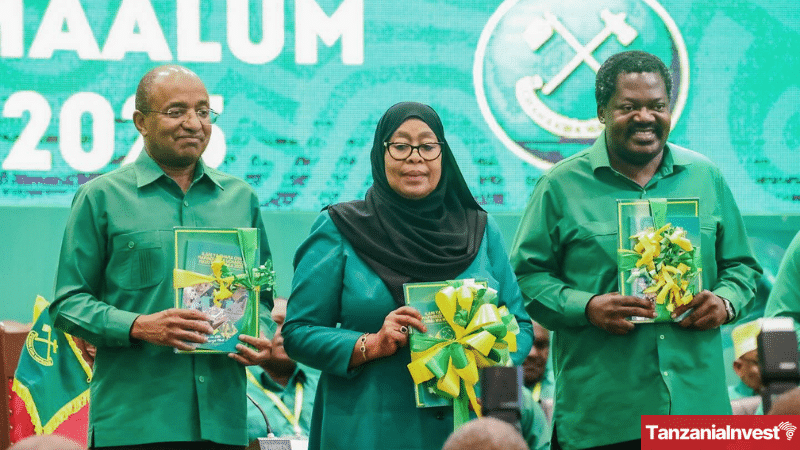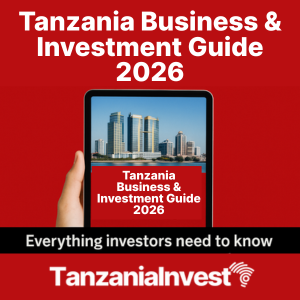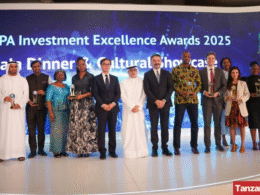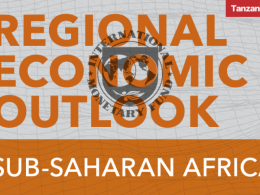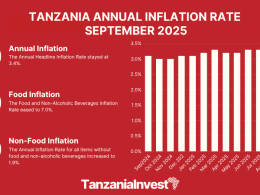In May 2025, Tanzania’s Chama Cha Mapinduzi (CCM) party released its 2025–2030 election manifesto, outlining its vision for a modern, integrated, and inclusive economy.
The new manifesto marks a shift in focus from the infrastructure-centered and industrialization-driven framework of the 2020–2025 manifesto, towards a broader agenda of inclusive and competitive economic transformation.
A key objective of the 2025-2030 manifesto is to raise GDP growth to at least 7% annually while keeping inflation within single digits.
To support this, the government intends to increase domestic revenue collection to 15.6% of GDP and ensure that all public borrowing is directed solely to development projects with measurable socioeconomic impact.
The manifesto also places greater emphasis on reducing income inequality, enhancing financial inclusion, and increasing public access to quality social services across both rural and urban areas.
It builds on the gains of the 2020–2025 manifesto, which aimed at foundational investments in infrastructure and key sectors.
For instance, as the 2020–2025 manifesto targeted the creation of 8 million jobs, the 2025–2030 manifesto takes into account the achievement of that goal and now focuses on expanding job quality and access among youth, women, and persons with disabilities by strengthening entrepreneurship programs and access to capital.
Also, the government aims to raise the agriculture sector’s contribution to GDP from 4.6% in 2025 to 10% by 2030 through expansion of irrigation from 983,466 hectares in 2024 to 5 million hectares in 2030, provision of 10,000 tractors, continued subsidies for inputs, promotion of drought-resilient crops, construction of mechanization hubs, and modern post-harvest technologies.
The new plan also prioritizes climate-resilient farming, post-harvest technology, and formal market linkages, marking a shift from basic input provision to value-chain transformation.
The industrialization agenda has also evolved from 2020–2025, as CCM prioritized the establishment and revival of manufacturing industries to generate employment and reduce import dependence.
In 2025–2030, the manifesto introduces strategic industrial policies that focus on domestic value addition and the development of industries based on local raw materials, such as fertilizer, animal feed, pharmaceuticals, and textiles.
The expansion of Special Economic Zones (SEZs) and rural industrial hubs is also highlighted as a key mechanism to promote inclusive growth.
The 2025–2030 manifesto goes further by promising a national private sector development policy and the establishment of a dedicated financing fund to support Tanzanian entrepreneurs and small businesses.
This is aimed at stimulating innovation, expanding local participation in the economy, and enabling domestic capital accumulation.
In the mining sector, the 2020–2025 plan successfully increased its contribution to GDP and foreign exchange earnings, but the 2025–2030 manifesto introduces new commitments to value addition before export and emphasizes the exploitation of strategic minerals and rare earth elements.
The government aims to increase exploration, expand processing facilities, and formalize artisanal mining to further enhance the sector’s economic contributions.
Infrastructure development remains a central component of the new plan, with the continuation of key projects initiated during the previous term.
While the 2020–2025 manifesto saw the completion of the Dar es Salaam–Dodoma Standard Gauge Railway (SGR) segment and 100% rural electrification, the 2025–2030 plan emphasizes linkages between transport corridors and economic zones, aiming to ensure infrastructure directly supports industrial and agricultural production.
The 2025–2030 manifesto also fully integrates the digital and blue economies into the national agenda, using ICT to improve services, grow Small and Medium Enterprises (SMEs), expand digital finance, and invest in Zanzibar’s fisheries, marine infrastructure, and seaweed processing.
The priorities of the 2025–2030 CCM Manifesto are:
- Modern, competitive, inclusive economy based on value addition.
- Youth employment, income generation, and poverty reduction.
- Better public services and social welfare.
- Expanded transport and logistics infrastructure.
- Enhanced science, technology, and digital innovation.
- Strengthened democracy and good governance.
- Maintained peace, unity, and national security.
- Promotion of national culture, arts, and sports.
Speaking about the new Manifesto, Tanzania’s President Samia Suluhu Hassan, CCM’s Chairperson and presidential candidate, stated that it serves as a roadmap to improve Tanzanians’ livelihoods through sustainable and inclusive development.
She emphasized the party’s intention to align its agenda with the aspirations of Tanzania’s Vision 2050.
“This manifesto reflects the priorities of all citizens, including youth, women, civil society, and private stakeholders. It is our commitment to empower all Tanzanians economically and improve their welfare,” added President Samia.
About Chama Cha Mapinduzi (CCM)
Tanzania’s Chama Cha Mapinduzi (CCM) party was officially established on February 5, 1977, following the merger of the Tanganyika African National Union (TANU)—the ruling party on the mainland led by Tanzania’s first President, Mwalimu Julius Kambarage Nyerere—and the Afro-Shirazi Party (ASP), the ruling party in Zanzibar led by Zanzibar’s first President, Sheikh Amaan Abeid Karume.
Since the introduction of multiparty politics in 1992, CCM has continued to win all six presidential elections, securing a majority of seats in the Parliament of Tanzania mainland and the Zanzibar House of Representatives.
Approaching every election season, CCM issues its election manifesto to outline the party’s vision and priorities for national development during its next term in office.





